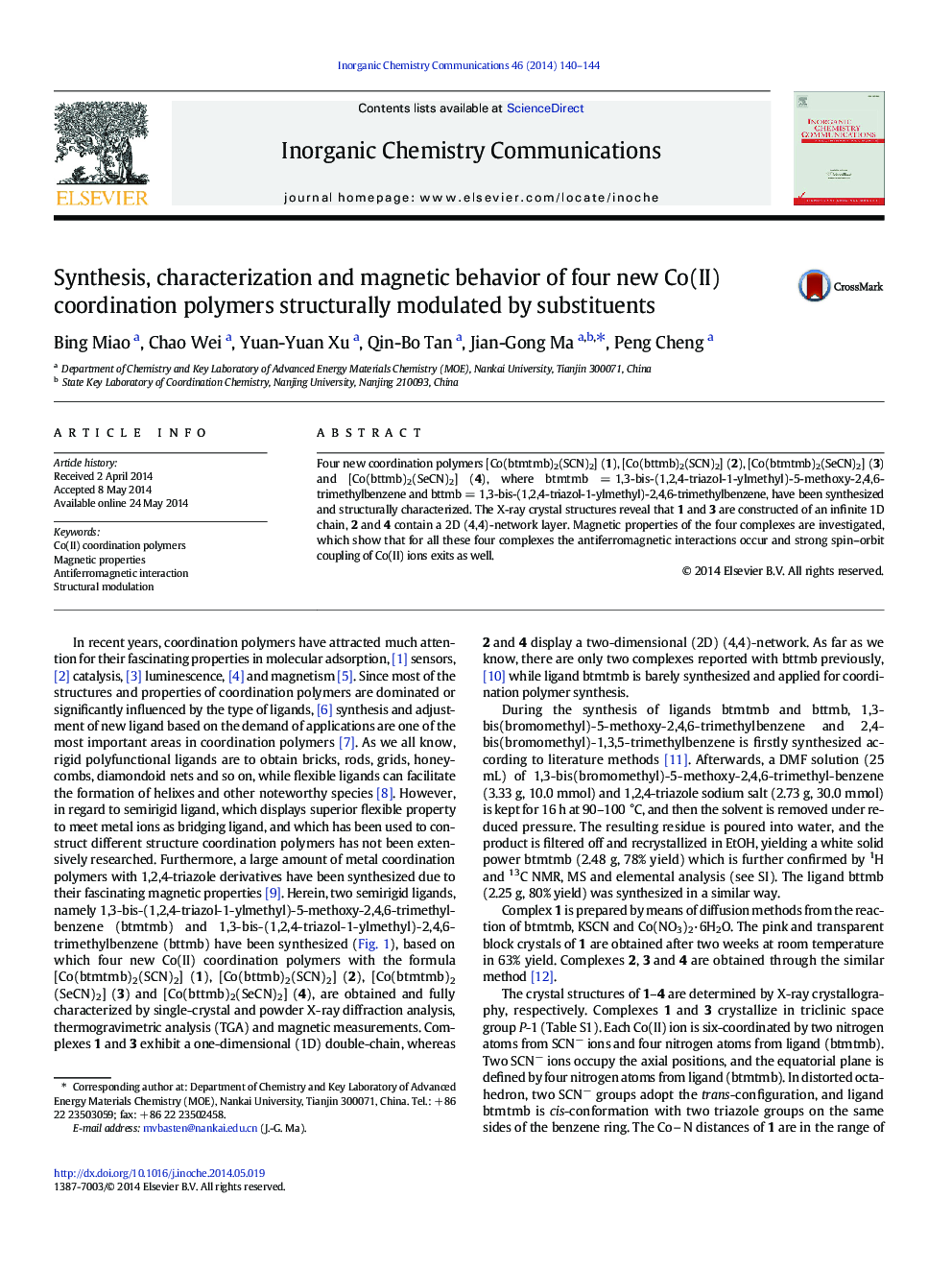| Article ID | Journal | Published Year | Pages | File Type |
|---|---|---|---|---|
| 1303582 | Inorganic Chemistry Communications | 2014 | 5 Pages |
•Two designed semirigid ligands we used are rarely reported.•Four Co(II) complexes are firstly synthesized and characterized.•The Co(II) complexes can be modulated from 1D to 2D by modification of ligand substituent group.•An antiferromagnetic interaction occurs in four new Co(II) complexes.
Four new coordination polymers [Co(btmtmb)2(SCN)2] (1), [Co(bttmb)2(SCN)2] (2), [Co(btmtmb)2(SeCN)2] (3) and [Co(bttmb)2(SeCN)2] (4), where btmtmb = 1,3-bis-(1,2,4-triazol-1-ylmethyl)-5-methoxy-2,4,6-trimethylbenzene and bttmb = 1,3-bis-(1,2,4-triazol-1-ylmethyl)-2,4,6-trimethylbenzene, have been synthesized and structurally characterized. The X-ray crystal structures reveal that 1 and 3 are constructed of an infinite 1D chain, 2 and 4 contain a 2D (4,4)-network layer. Magnetic properties of the four complexes are investigated, which show that for all these four complexes the antiferromagnetic interactions occur and strong spin–orbit coupling of Co(II) ions exits as well.
Graphical abstractFour new Co(II) complexes with substituent-group-dependent 1D and 2D structures, respectively, were obtained based on two rarely reported semirigid ligands, which exhibit antiferromagnetic interactions and strong spin–orbit coupling of Co(II) ions.Figure optionsDownload full-size imageDownload as PowerPoint slide
